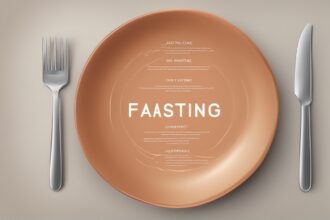Have you ever wondered how skipping a meal or two could transform your health? fasting, an ancient practice rooted in cultural and religious traditions, has gained massive popularity in recent years as a powerful tool for wellness. Whether you’re aiming to lose weight, improve mental clarity, or reset your body, understanding the different fasting styles can help you choose the right approach. In this comprehensive guide, we’ll dive into the most popular types of fasting, explore their benefits with scientific backing, and offer practical tips to get started. Let’s uncover how these fasting methods can fit into your lifestyle and support your health goals!
What Are Fasting Styles and Why Do They Matter?
Fasting styles refer to the various structured ways of abstaining from food or specific nutrients for a set period. These methods aren’t just about skipping meals; they’re intentional practices designed to trigger specific physiological responses like improved metabolism, cellular repair, and fat burning. Research, such as studies published in the New England Journal of Medicine, shows that fasting can enhance insulin sensitivity and promote autophagy—a process where cells clean out damaged components. With so many fasting techniques out there, knowing their differences helps you pick one that aligns with your schedule, health needs, and personal preferences. Let’s break down the most common types of fasting to see which might work for you.
Intermittent Fasting: The Most Popular Fasting Style
Intermittent fasting (IF) is arguably the most well-known among modern fasting styles. It’s not about what you eat but when you eat, cycling between periods of eating and fasting. Popular IF methods include the 16/8 method (fast for 16 hours, eat during an 8-hour window) and the 5:2 approach (eat normally for 5 days, restrict calories to 500–600 on 2 non-consecutive days). Studies, like those from the Journal of Translational Medicine, suggest IF can aid weight loss, reduce inflammation, and improve heart health. It’s flexible, making it a go-to for beginners exploring fasting methods. Want to try it? Start with a 12/12 schedule to ease into longer fasting windows.
Water Fasting: A Deep Reset for Body and Mind
Water fasting takes things up a notch by restricting everything except water for a set period, often 24–72 hours or longer under medical supervision. This intense form of fasting is believed to promote detoxification and deep cellular repair through autophagy. A 2018 study in Scientific Reports found that prolonged water fasting could lower blood pressure and improve markers of oxidative stress. However, it’s not for everyone—side effects like fatigue or dizziness can occur. If you’re curious about this fasting approach, consult a healthcare provider first and keep it short (24 hours) for your initial attempt. Hydration is key, so sip water consistently!
Juice Fasting: A Nutrient-Packed Alternative
Unlike water fasting, juice fasting allows the consumption of fresh fruit and vegetable juices while avoiding solid foods. Typically lasting 1–10 days, this method provides vitamins and minerals while still reducing calorie intake. Advocates claim it supports digestion and “cleanses” the body, though scientific evidence on detox benefits remains limited. A small study in Nutrition Journal noted that short-term juice fasting might improve gut microbiota. If you’re testing this fasting style, here are some tips to keep it safe and effective:
- Choose organic produce to minimize pesticide exposure in your juices.
- Focus on vegetable-heavy blends to avoid sugar spikes from fruit juices.
- Limit duration to 3–5 days unless guided by a professional.
- Listen to your body—stop if you feel weak or unwell.
Dry Fasting: The Extreme End of Fasting Methods
Dry fasting, one of the most intense fasting techniques, involves abstaining from both food and water for a short period, often 12–24 hours. Practiced in some cultural and spiritual contexts, it’s thought to accelerate fat loss and detoxification. However, there’s little scientific research to support these claims, and dehydration risks are high. Experts, including those from the Mayo Clinic, caution against it for most people due to potential health dangers. If you’re intrigued by extreme fasting approaches, prioritize safety with these precautions:
- Never exceed 24 hours without water unless under strict medical supervision.
- Avoid physical exertion during the fast to prevent dehydration.
- Break the fast slowly with small sips of water before eating.
- Skip this method if you have any chronic health conditions.
- Consult a doctor beforehand to assess personal risks.
Religious and Cultural Fasting: Tradition Meets Health
Many fasting styles originate from spiritual practices, blending health benefits with cultural significance. For instance, Ramadan fasting in Islam involves abstaining from food and drink from dawn to sunset for a month, promoting discipline and community. Similarly, Christian Lent often includes partial fasts, while Yom Kippur in Judaism features a 25-hour complete fast. Research in The American Journal of Clinical Nutrition suggests that such periodic fasting can improve metabolic health and reduce stress markers. These fasting traditions remind us that fasting isn’t just physical—it’s deeply tied to mental and emotional well-being. If you’re participating, ensure proper hydration and nutrition during non-fasting hours.
How to Choose the Right Fasting Style for You
With so many fasting methods to explore, picking the right one can feel overwhelming. Start by assessing your goals—are you fasting for weight loss, mental clarity, or spiritual reasons? Consider your lifestyle too; a busy schedule might pair well with intermittent fasting’s flexibility, while a short juice fast could suit a weekend reset. Always factor in your health status—conditions like diabetes or pregnancy may require modified fasting approaches or medical advice. Begin slowly, track how your body responds, and adjust as needed. Remember, fasting isn’t a one-size-fits-all solution; it’s about finding what sustains and energizes you.
As we’ve explored, the world of fasting styles offers something for everyone, from the accessible intermittent fasting to the challenging dry fast. Each method carries unique benefits, backed by varying degrees of science, and potential risks to weigh. Whether you’re drawn to the metabolic boosts of fasting techniques like IF or the spiritual depth of cultural fasts, the key is to approach fasting mindfully. Start small, stay hydrated, and consult professionals if you’re unsure. Have a favorite fasting method or a tip to share? Drop it in the comments below—we’d love to hear how fasting approaches have worked for you. Here’s to discovering a healthier, more balanced you through the power of fasting!






